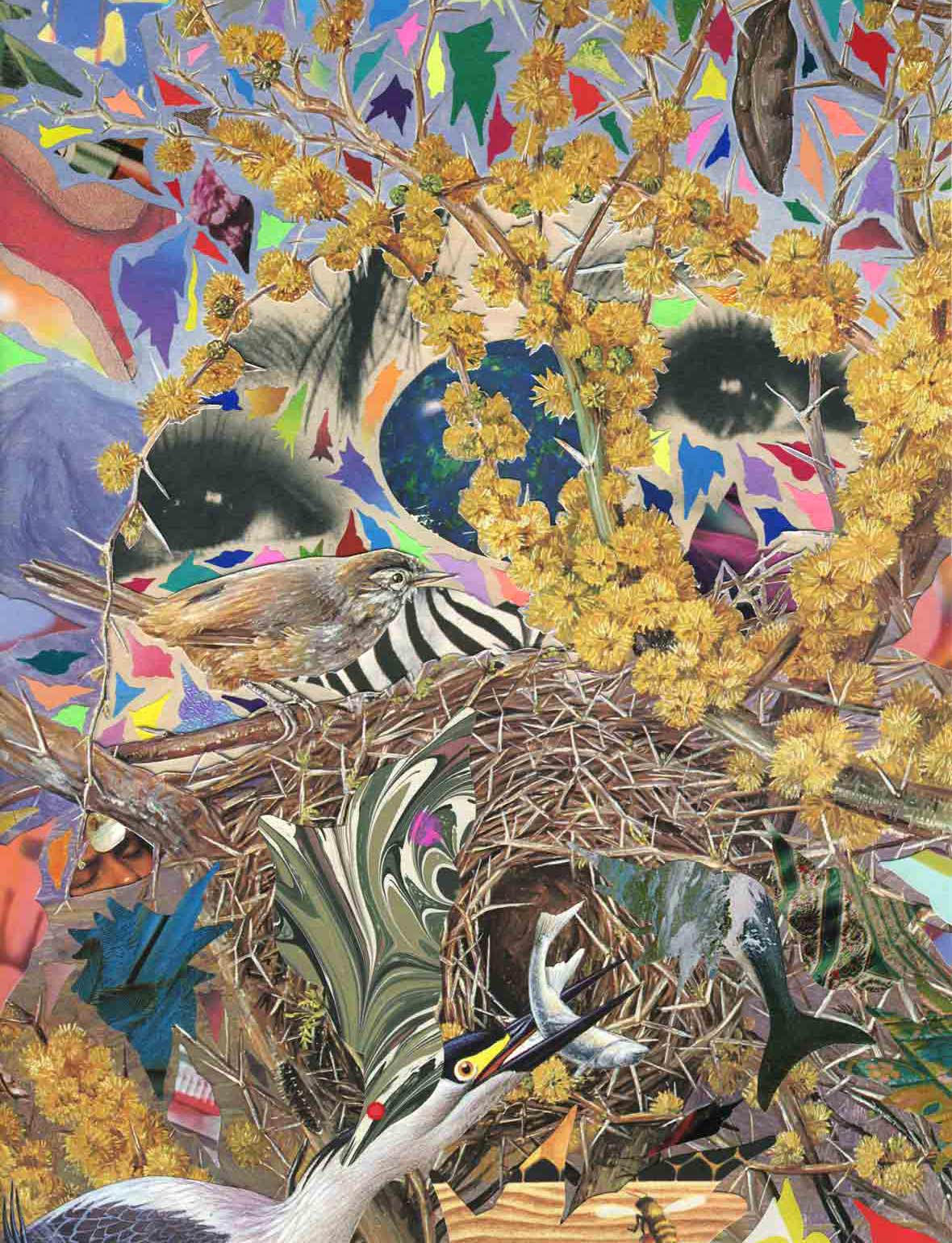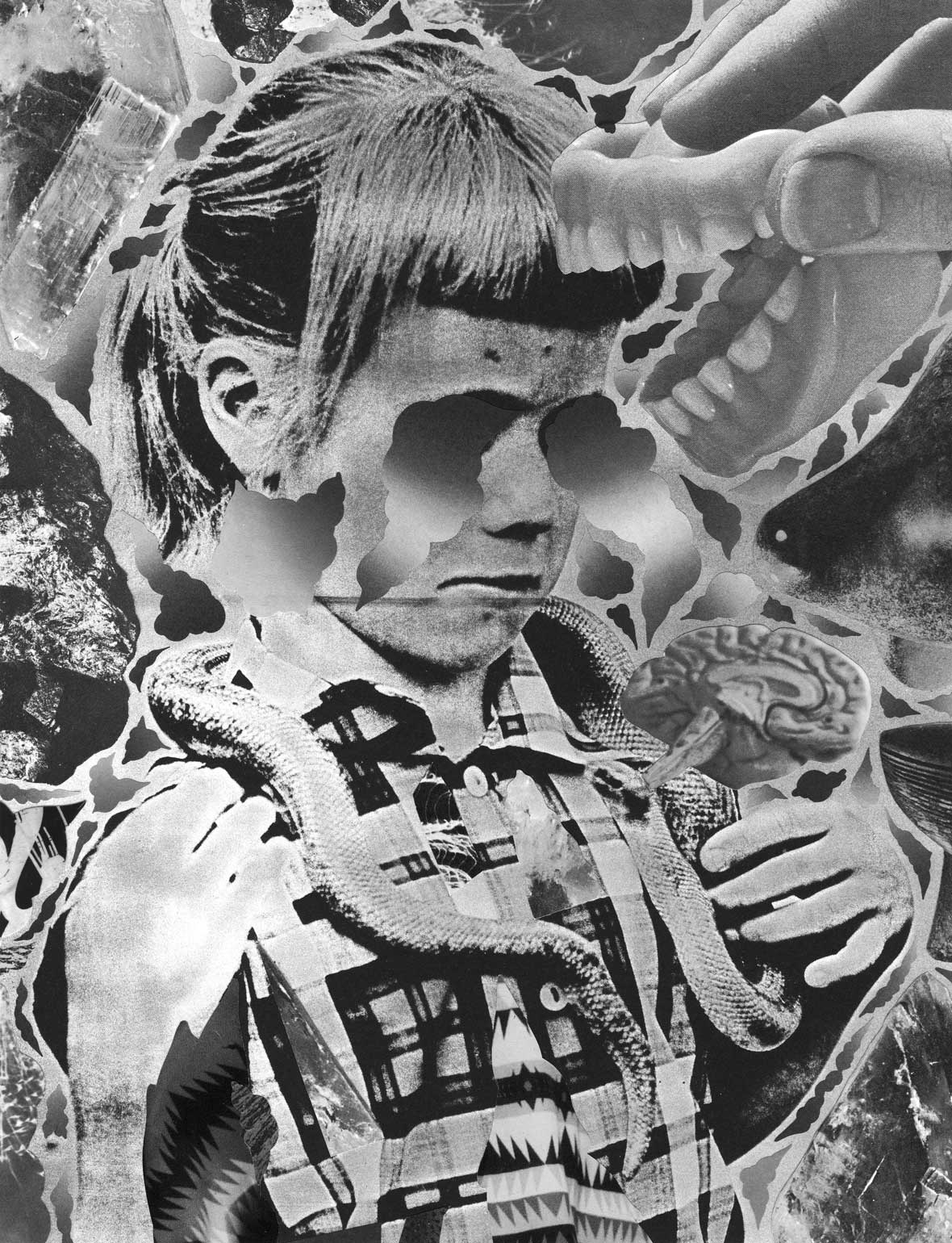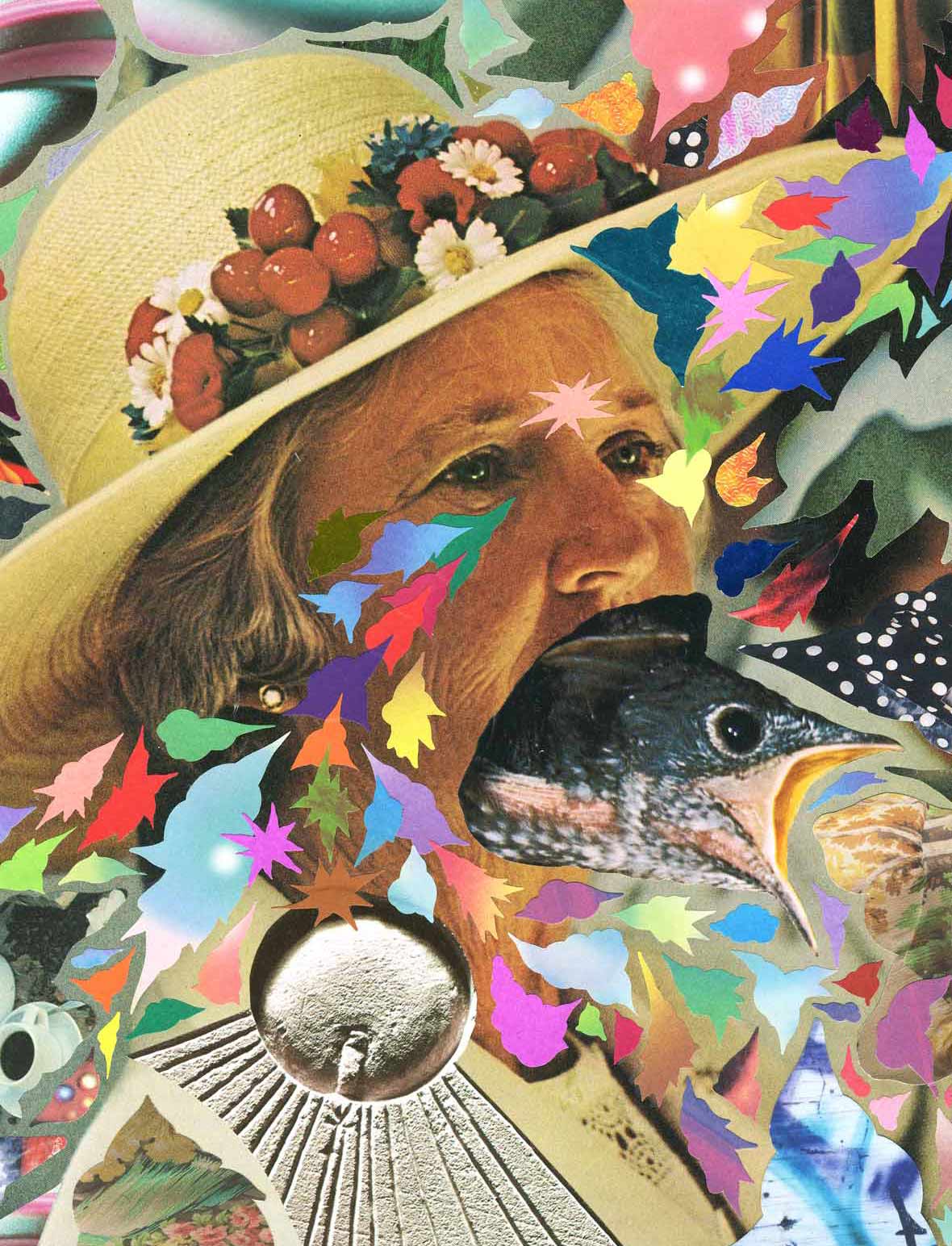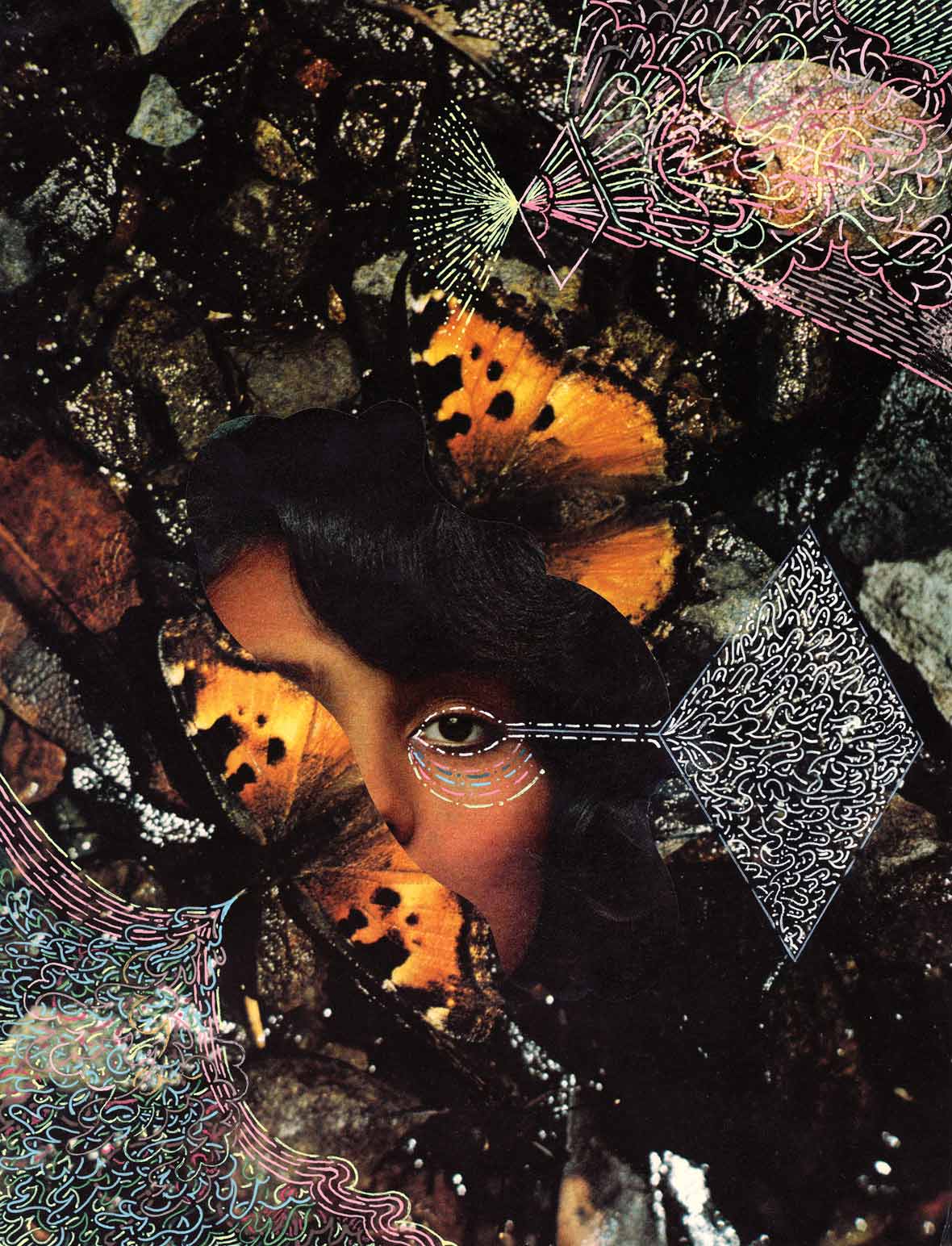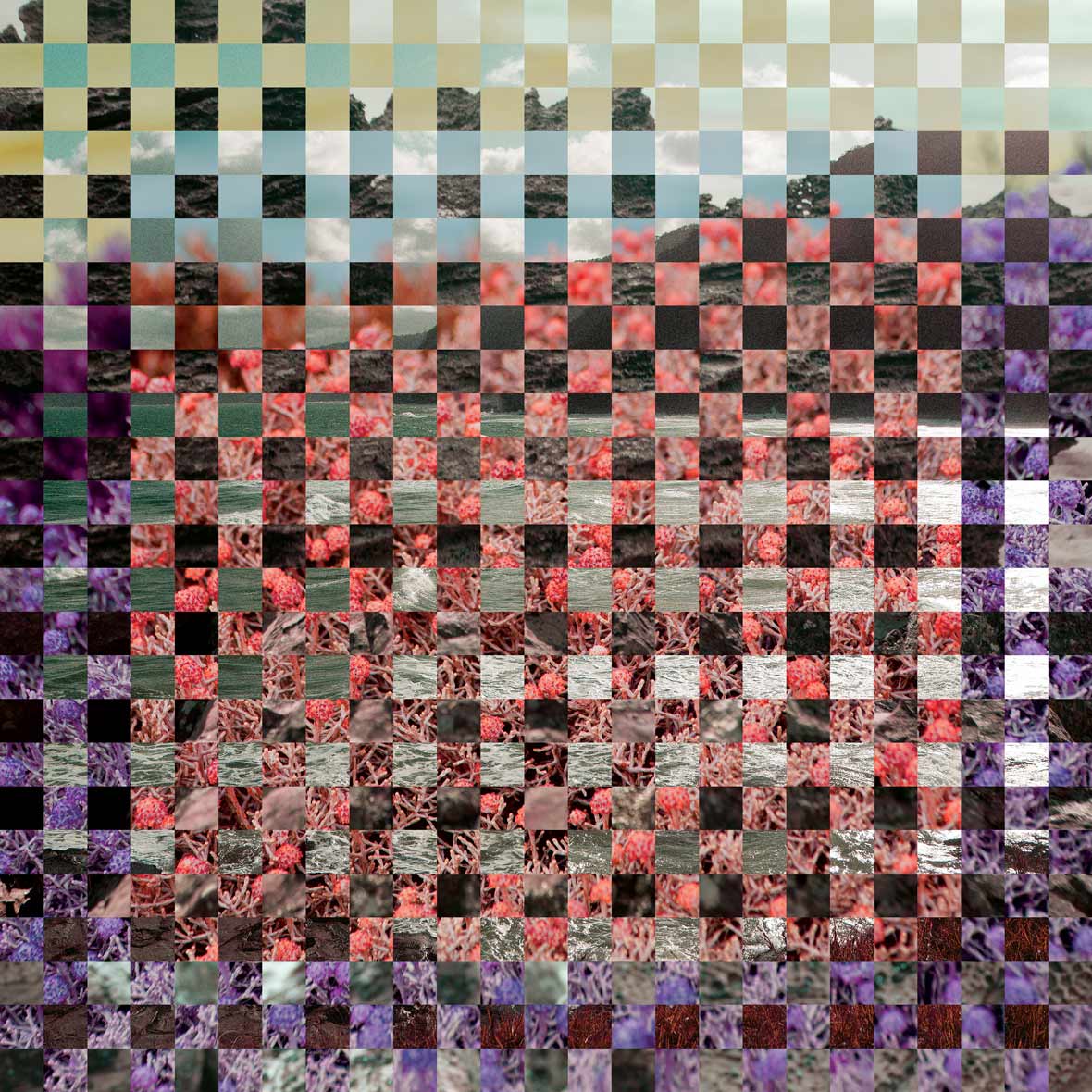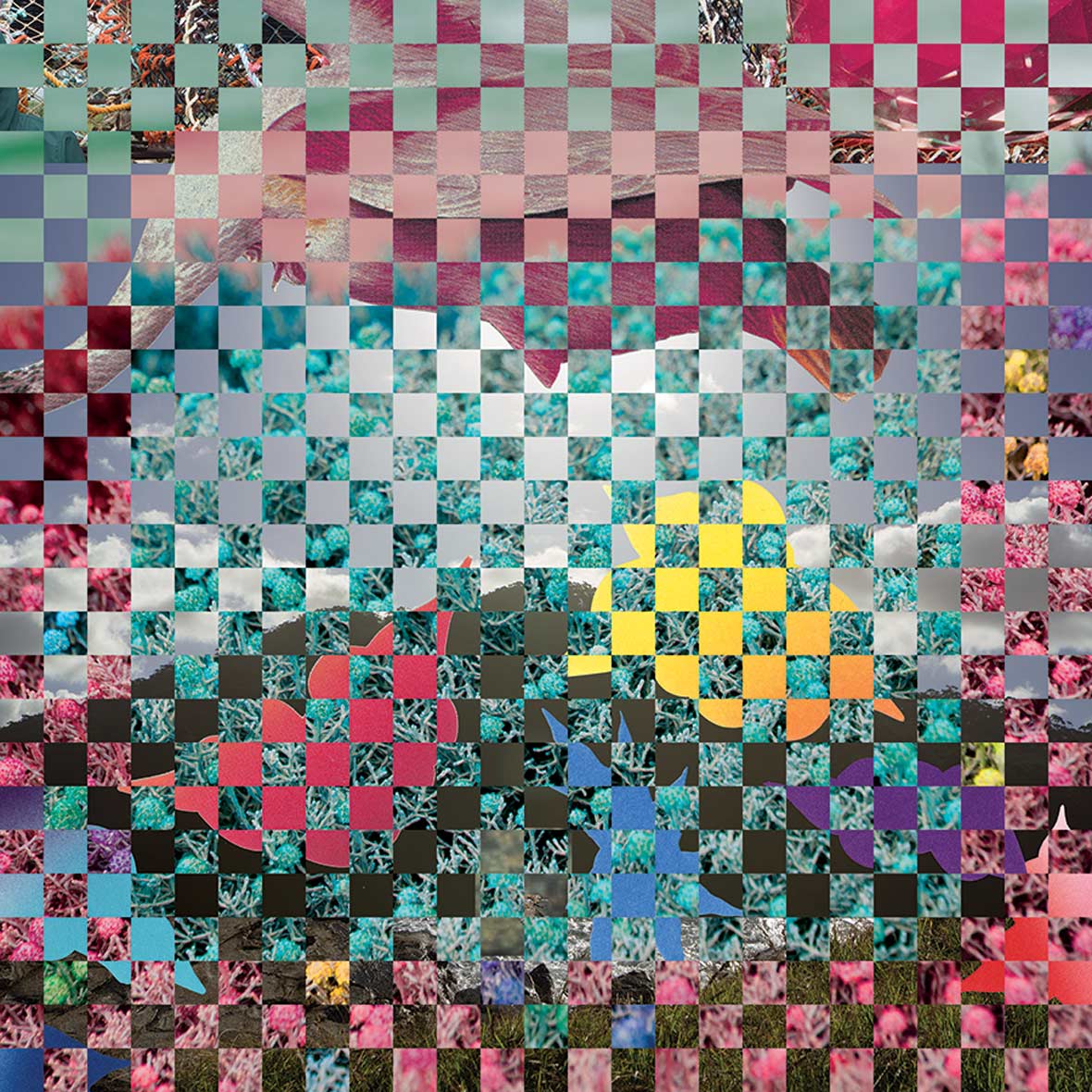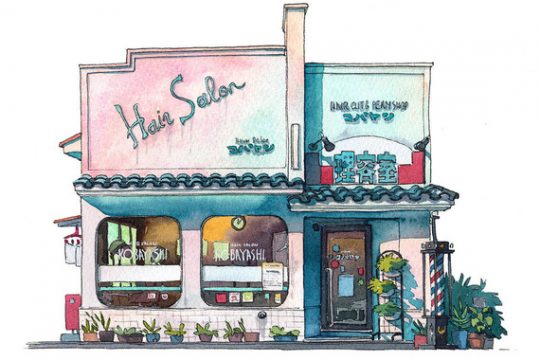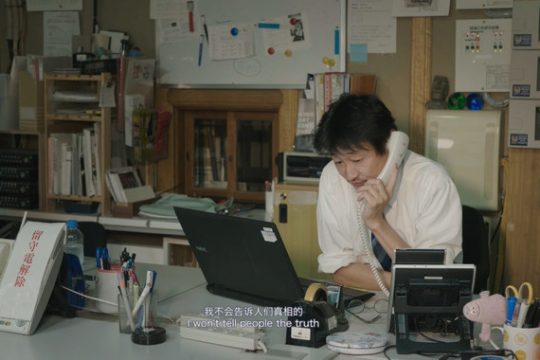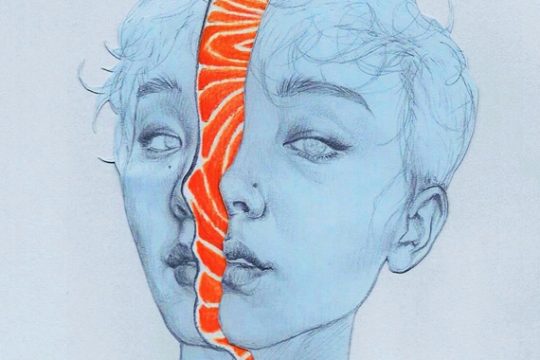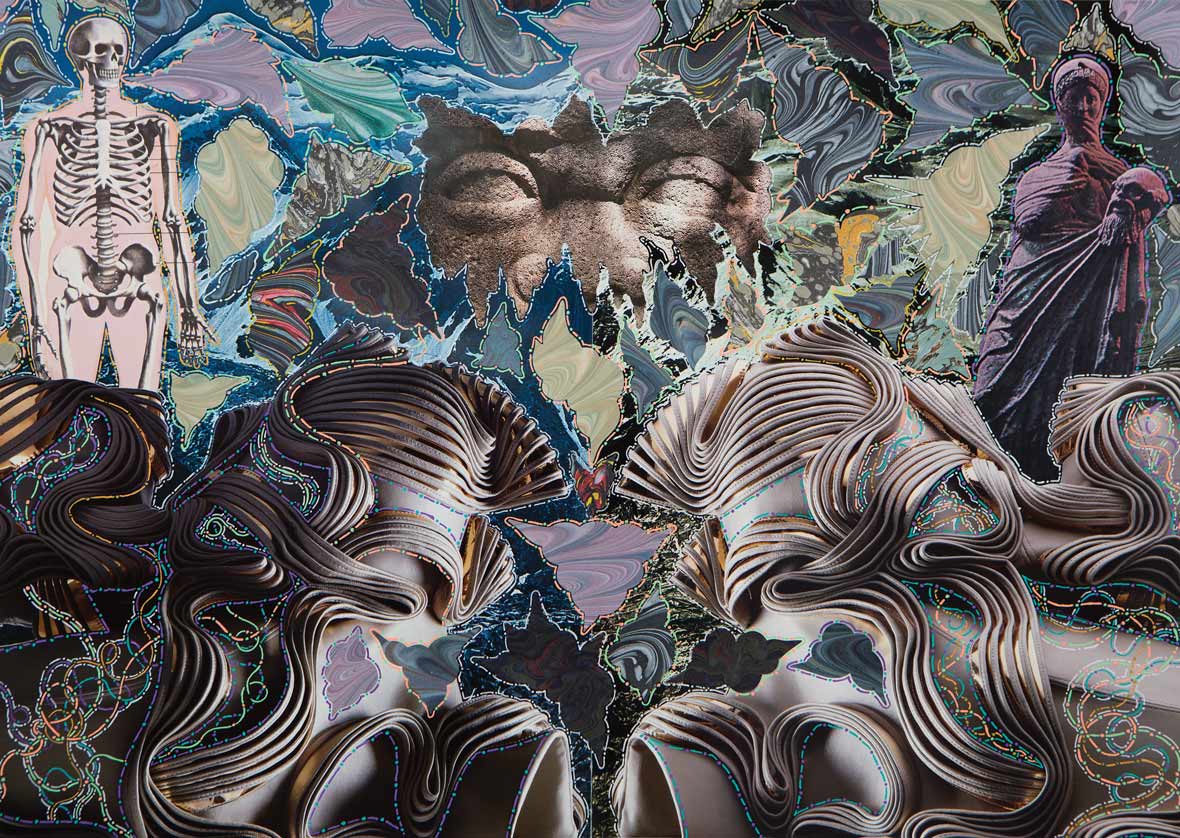
Ex-member of the Providence noise rock bands Lightning Bolt and Black Dice, Hisham Akira Bharoocha is also known as a multi-disciplinary visual artist. Half Japanese and half Burmese, Hisham moved around often in Canada, the U.S., and Japan with his family as a kid; his parents had the “American Dream” to make it out West, he says. Some of his artistic output includes some spectacular collages that he started to produce after he graduated from the Rhode Island School of Design (RISD) in Providence, Rhode Island. Neocha recently got to chat to Hisham about what inspires his stunning collage work in an exclusive interview below.
プロビデンス出身のノイズロック・バンド、ライトニング・ボルトとブラック・ダイスの元メンバーであるHisham Akira Bharoochaは、学際的なビジュアルアーチストとしても知られています。日本人とビルマ人との両親の間に生まれたヒシャムは、家族と共にカナダ、アメリカ、日本を転々とする幼少期を過ごしました。両親は、西洋で一旗揚げるという、いわゆるアメリカンドリームを抱いていたと彼は言います。彼のアート作品の中には、ロードアイランド州プロビデンス市のロードアイランド・スクール・オブ・デザイン(RISD)卒業後に制作を始めた見事なコラージュが見られます。今回のNeochaの独占インタビューでは、目を見張るようなヒシャムのコラージュ作品にインスピレーションを与えるものが何なのかを語っていただきました。
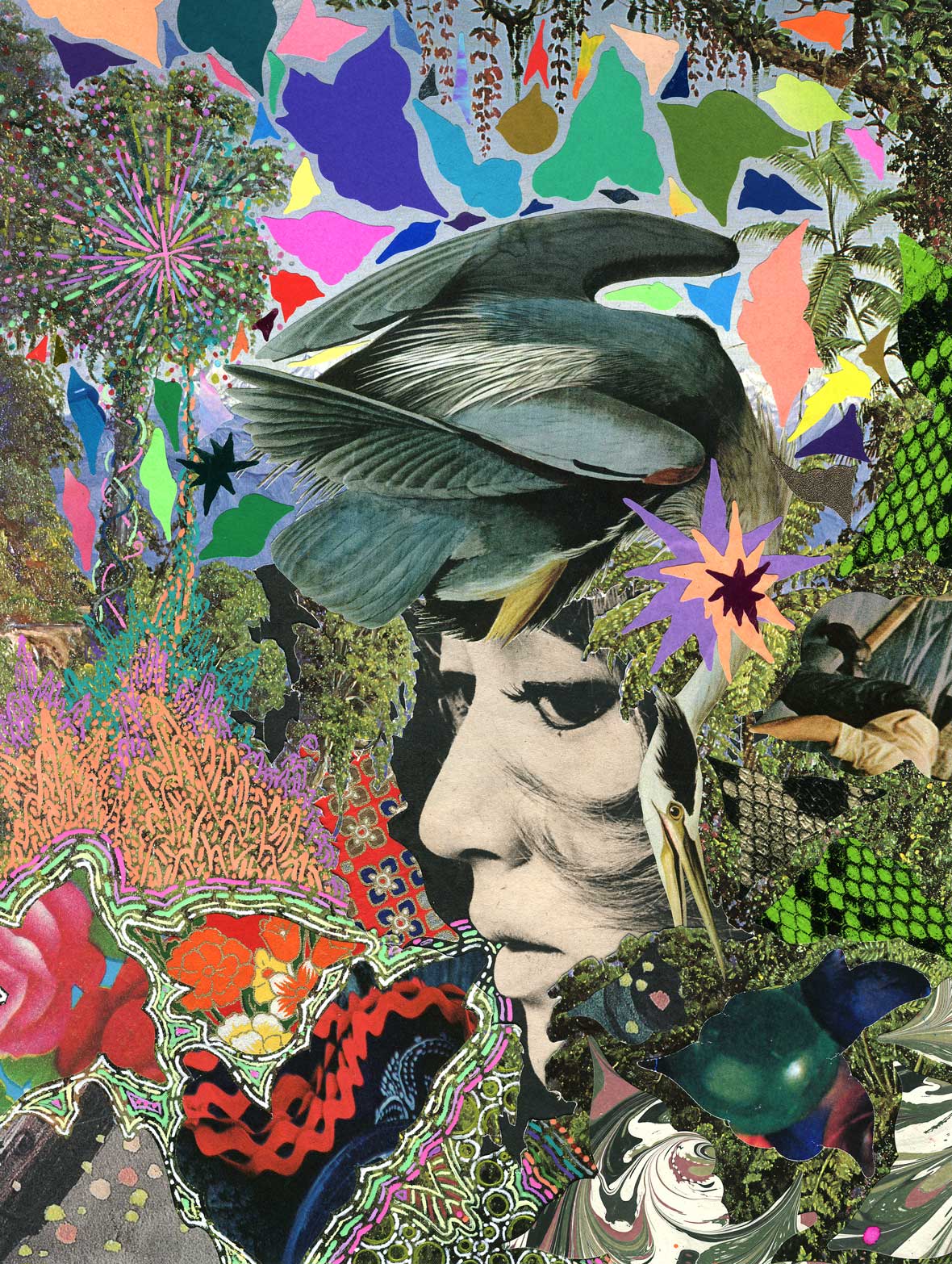
Neocha: When did you start doing collages?
Hisham: I started making collage-style notebooks when I was at art school. They were scrap books filled with photos and other things from my day to day life. I was influenced by Shinro Ohtake, Yamataka Eye, and Peter Beard, who all also made collage scrap books. After graduating from RISD, I found myself with not enough money to buy film, process the film, make prints, etc., so I started making collage as artwork as it was much cheaper to make. The reality of my situation drove me to make this kind of found image collage work.
Neocha: コラージュを始めたのはいつ頃ですか?
Hisham: アートスクール在学中にコラージュスタイルのノートを作り始めました。これは、日常生活の写真を始め、様々な出来事が詰まったスクラップブックでした。私と同じようにコラージュのスクラップブックを作った大竹伸朗、山塚アイ、そしてピーター・バードに影響されたのです。RISDの卒業後はフィルムを買ったり、現像したり、印刷する資金がなかったので、はるかに安上がりなコラージュ作品を作り始めたのです。当時の生活が、このような既存の画像を集めたコラージュ作品を作るきっかけとなったのです。
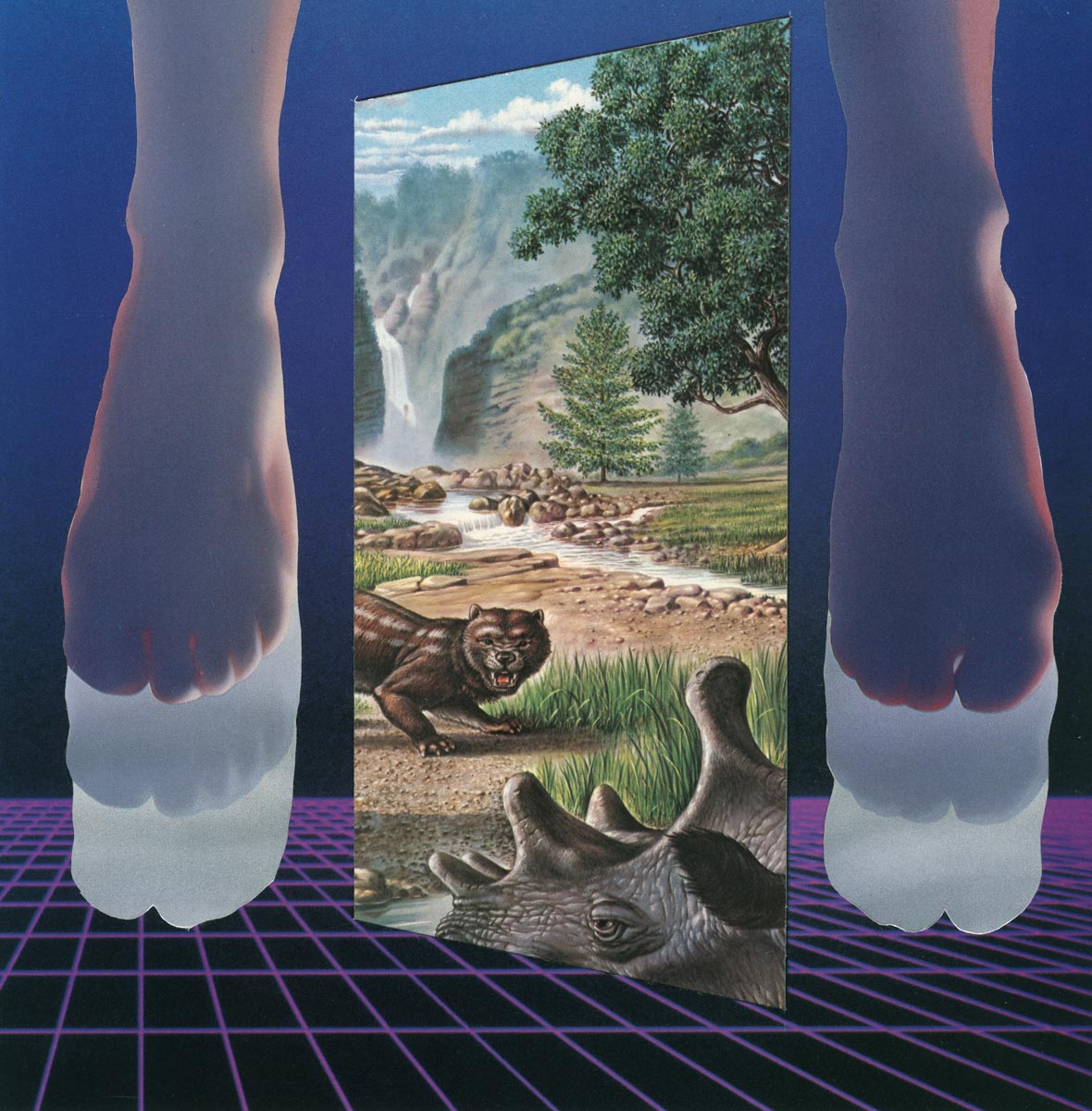
Neocha: What is the concept behind some of your collages? Are they done in a series or sporadically?
Hisham: The concept comes from my fascination with how human minds are all wired differently and my collages are a visualization of how surreal the mind can be. Our viewpoints on what we experience through our senses is skewed are all based on our cultural background, life history, and mental affiliations to objects based on our upbringing. One’s mental architecture can be vastly different from another person’s. My collage work references dreams, daydreams, and meditation as well.
Sometimes they are created as a series, mostly because a group of them were made at a certain time in my life where a few topics were at the forefront of what I was thinking about. But they are sometimes created sporadically, since I may be working more on mural paintings or drawings. I work on all mediums at the same time usually.
Neocha: ヒシャムさんのコラージュにはどのようなコンセプトがありますか?シリーズ、それとも単発的に制作しているのでしょうか?
Hisham: コンセプトは、人間の心がそれぞれどのような異なる形で繋がっているのかという点への強い関心から生まれ、コラージュ作品には、心がいかに超現実的なものかがビジュアライズされています。私達が感覚を通じて得られる視点はぼやけていて、これは育ち方に基づく文化的背景、生活史、そしてオブジェクトとの精神的な結び付きによって異なります。人間は、一人ひとりの精神構造が大きく異なります。作品の中には、夢や白昼夢、そして瞑想をテーマにしたものもあります。
時には、人生のとある時期に考えていたことが真っ先に浮かんだものをいくつかのトピックとし、シリーズ化した作品もあります。ただ、壁画や線画の制作に徹していたため、単発的な作品もあります。と同時に、普段は考えを伝えるための手段として作品を手がけています。
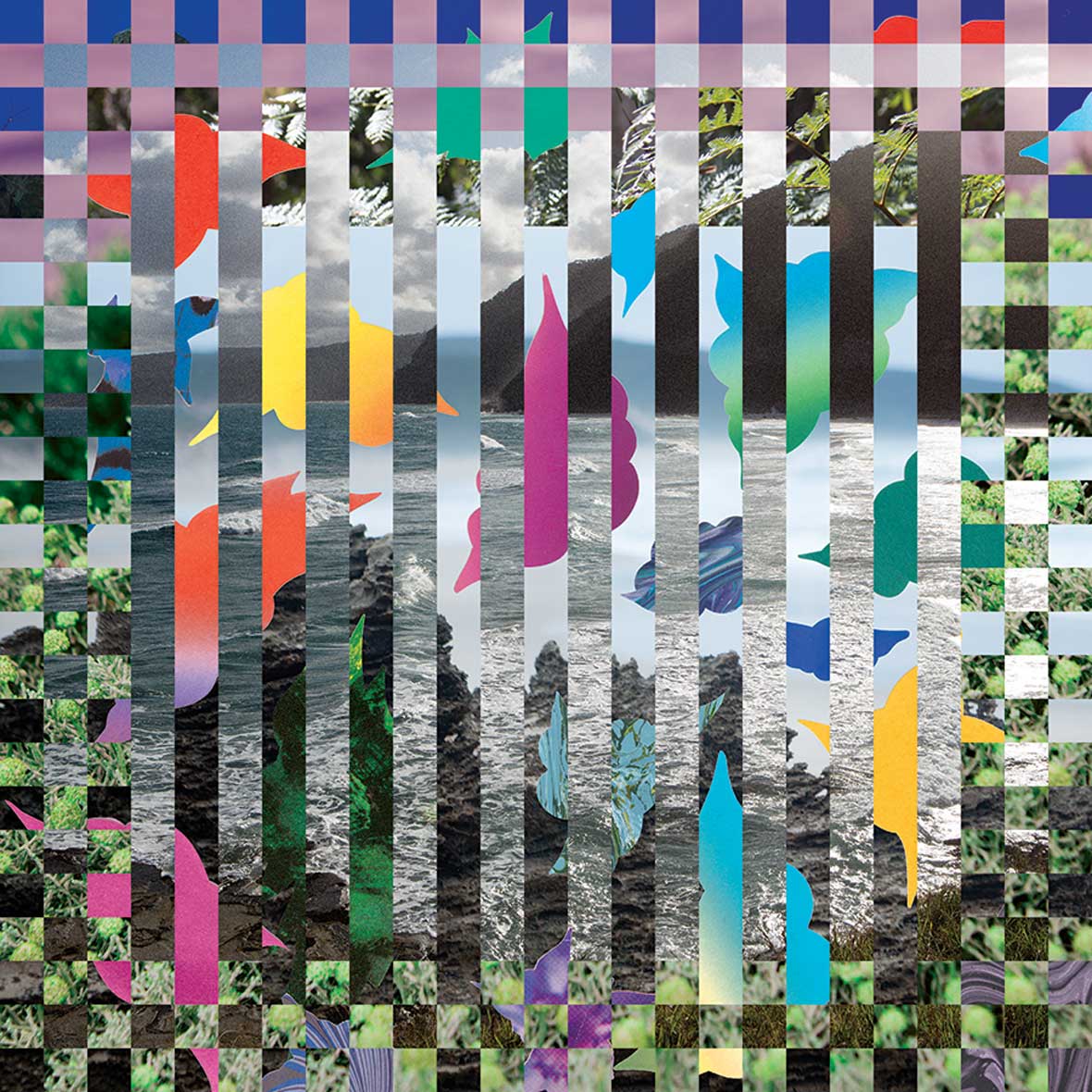
Neocha: What materials do you use? Anything special or notable about your creative process?
Hisham: Until very recently I was using only found imagery for my collage work. That grew out of my photographic background, being interested in documenting moments that happen in the world that I am not imagining but just come upon – found moments. In my own collage-making process, I am constantly amazed and inspired by strange images I come upon which I cut from old books I find at the thrift stores. When I photograph, I am amazed to happen upon a situation that I could not have imagined myself, which leads me to want to make an image using a camera. In this way, I feel collage making is an extension of my fascination of the strange world we live in.
I have recently started using my own photographs in collages, and it has definitely changed the way the finished collages feel to me, since there is a reference to my own experiences and impressions I carry home in the photographs. I like that they reference a personal experience but they are very different from my earlier collage works. I still use found images in my collages, but at this point I haven’t really been mixing found imagery with my own photographs.
Neocha: どのような素材を使っていますか?ヒシャムさんの制作プロセスで特筆または注目すべき点はありますか?
Hisham: つい最近まで、既存の画像のみをコラージュ作品に取り入れていました。これは、私の想像によるものではなく、この世で起きた瞬間的な出来事を記録に残すことに関心がある、写真家としての歴史から生まれたものです。浮かび上がったその瞬間を残すのです。コラージュ制作のプロセスでは、古本屋で見つけた本から切り抜いた奇妙なイメージに驚かされ、インスパイアされることがあります。写真を撮る時は、想像もしなかった状況との偶然の出会いに驚き、そこからカメラを使ってイメージを作るという思いに駆られます。これによりコラージュ制作は、私達が住む一風変わった世界への魅力を伸ばすものだと感じています。
最近は、撮影した写真をコラージュに取り入れることで私自身の体験や印象の片鱗が見せられるため、コラージュへの仕上げに対する思いが大きく変わりました。個人的な体験が元になっていたとしても、初期のコラージュ作品とは大きく違う点が気に入っています。今でも既存の画像をコラージュに使うことはありますが、既存の画像と私の写真を合わせて使うことはほとんどありません。
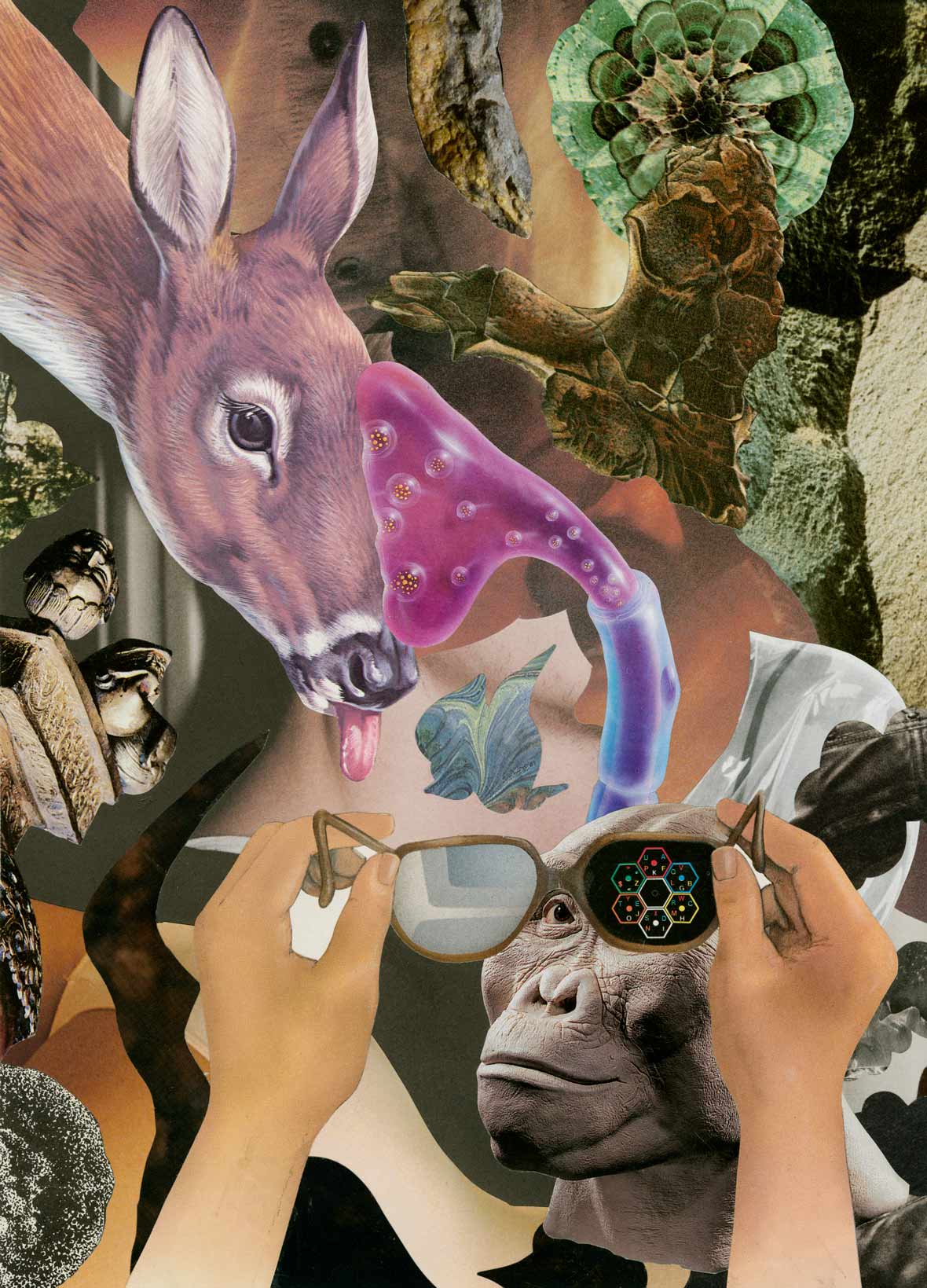
Neocha: Who are some of your creative influences? What inspires your collages?
Hisham: I mentioned some names earlier, but I remember being so in love with Russian propaganda poster art from the communist era, as well as some artists like Tadanori Yokoo, Dieter Roth, Man Ray, Maholy-Nagy, Henry Darger, Adolf Wolfi, Gabriel Orozco, Rosemary Trockel, Lothar Tempel, Tony Oursler, Sol Lewitt, Robert Irwin, Richard Tuttle, John McCracken, Frank Stella, James Turrell, Blinky Palermo, and Ann Truitt – to name a few off the top of my head. As a teenager, I was super into skateboard graphics from the 80’s and 90’s especially Jim Phillip’s graphics. These artists inspire me not only for my collage work, but for all the other types of work I do, which include mural paintings, performance, sculpture, and so on.
I’m also very much inspired and influenced by my friends that I went to art school with, like Ara Peterson, Brian Chippendale, Bjorn Copeland, Whitney Bedford, Jim Drain, Dan Colen, and Joe Bradley – to name a few. I am still very inspired by my friends in New York. Going to studio visits is very inspiring. I feel lucky to get to go to galleries and museums regularly here.
Neocha: ヒシャムさんの創造力に影響を与えた人物は誰ですか?コラージュにインスピレーションを与えるものは何でしょうか?
Hisham: 先ほど何人かの名前を挙げましたが、旧ソ連・共産主義時代のプロパガンダポスターアートであったり、横尾忠則、ディーター・ロス、マン・レイ、モホリ=ナジ・ラースロー、ヘンリー・ダーガー、アドルフ・ウォルフィ、ガブリエル・オロスコ、ローズマリー・トロッケル、ローター・テンペル、トニー・アウスラー、ソル・ルウィット、ロバート・アーウィン、リチャード・タトル、ジョン・マクラッケン、フランク・ステラ、ジェームズ・タレル、ブリンキー・パレルモ、そしてアン・トゥルイットといったアーチストにハマっていたことが頭に浮かびます。十代の頃は、80年代から90年代にかけてスケートボードのグラフィックス、特にジム・フィリップスのグラフィック作品にハマりました。これらのアーチストは、コラージュ作品だけでなく壁画、パフォーマンス、彫刻など、私が手掛けたあらゆる種類の作品に影響しています。
また、アラ・ピーターソン、ブライアン・チッペンデール、ビョルン・コープランド、ホイットニー・ベッドフォード、ジム・ドレイン、ダン・コーレン、ジョー・ブラッドリーなど、アートスクール時代の仲間達にも大いに触発され、影響を受けています。ニューヨークの友人達からは今でも大いにインスパイアされています。スタジオに足を運ぶ際はとても良い刺激になります。ここでは定期的にギャラリーや美術館を訪れることができ、とても幸運だと思っています。
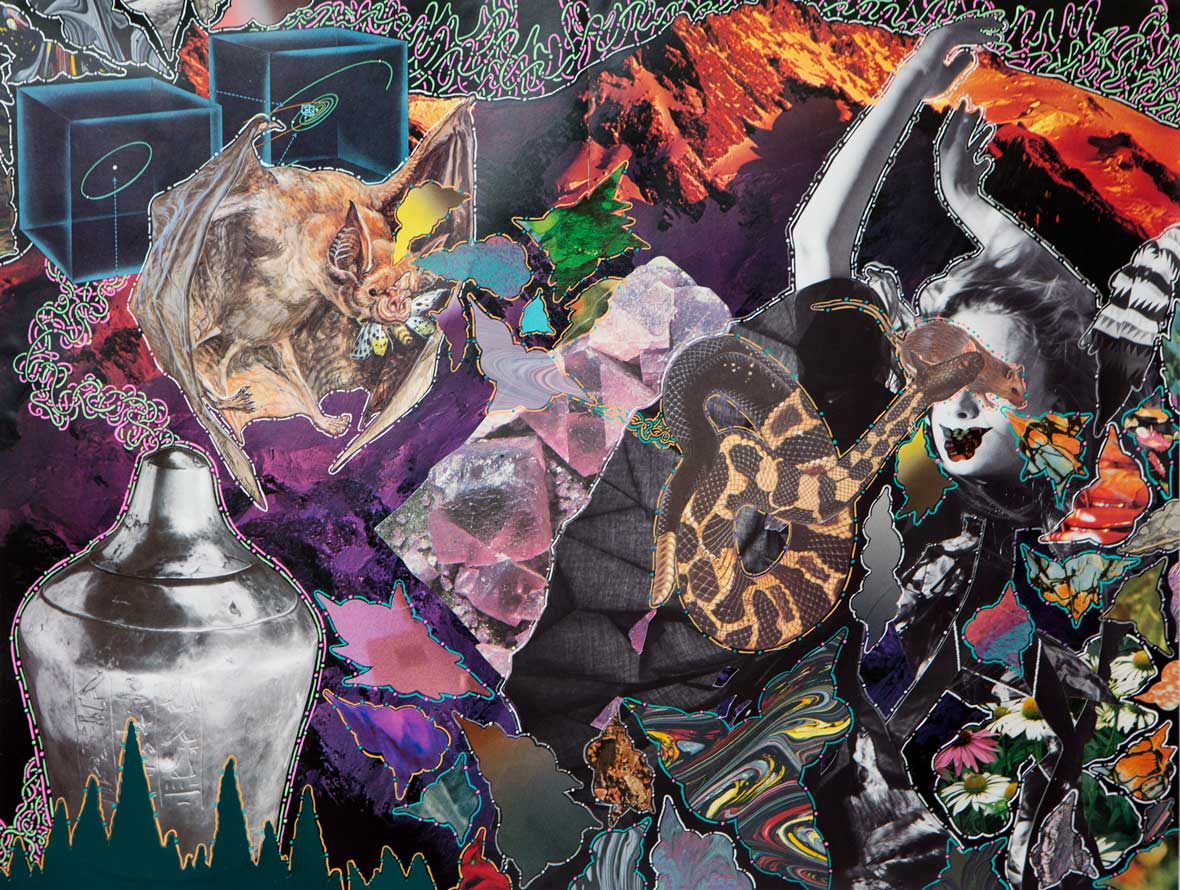
Neocha: As you are also a musician, what role does music play in your visual artwork? Any relation?
Hisham: The creative process is very similar. It can start with a gesture, one mark with a brush, one cut-out shape in blank space. One mark leads to another. One drum hit or note on a guitar will lead to the next and very quickly you will have a beat or a melodic line. It may start with a gesture but usually a concept can be discovered during the process of creation.
Most of my visual work feels rhythmic. I try to create compositions that keep your eye moving across a surface, so the viewer has the experience of movement when looking at an image. I like cyclical rhythms in my music and I try to create visual work that expresses that kind of feeling, like a rhythm where you can’t tell where it starts and ends. I want my visual work to feel like a non-religious mantra, not so much like a sentence with a start and ending.
Neocha: ヒシャムさんはミュージシャンでもありますが、ビジュアルアートでは音楽がどのような役割を果たしていますか?繋がりはありますか?
Hisham: 制作プロセスがとてもよく似ています。身ぶりであったり、絵筆による印付けであったり、余白から形を切り抜くことから始める時もあります。そして、一つの印から次の印が生まれます。ドラムの一打やギターの音符から次の音色が生まれ、次の瞬間にはビートやメロディーラインが作られます。たとえ身ぶりから始まったとしても、通常、コンセプトが制作プロセスの中で見つかります。
私の大半のビジュアル作品にはリズムが感じられます。作品を見る人がイメージを見た際には動きを感じ、表面全体を見渡すような構成を心がけています。私は自分の音楽の周期的なリズムが好きで、どこから始まりどこで終わるのかも分からない、リズムのような感覚をビジュアル作品で作るように心がけています。始めと終わりがある文章ではなく、宗教性を帯びないマントラをビジュアル作品で表現したいと思っています。
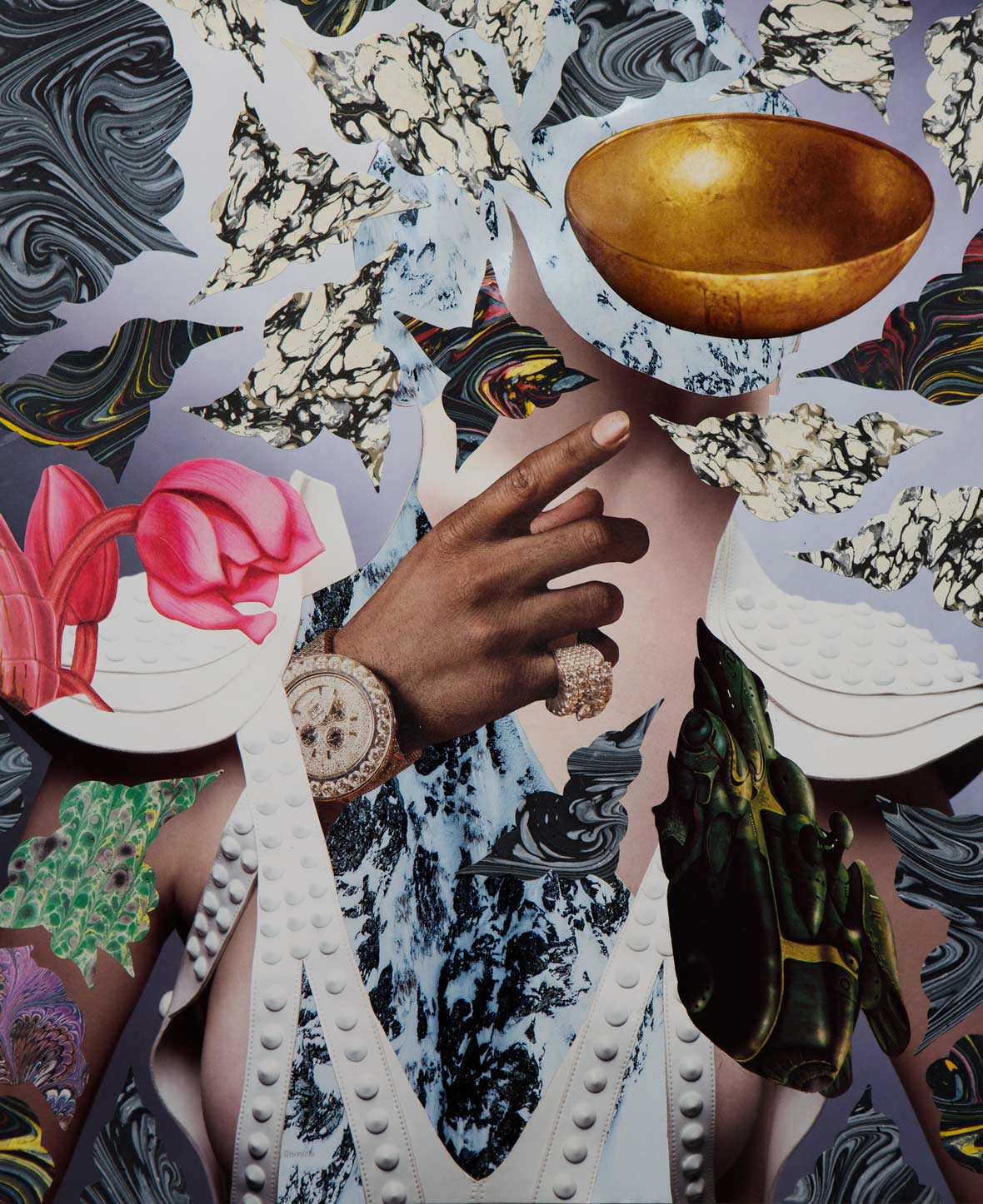
Neocha: Have you come across anything interesting and new happening in the Asia region that has inspired you?
Hisham: I have always been interested in artists from Asia since I grew up in Japan. I like technology-meets-sound artists, such as Ryoji Ikeda – but of course I am also inspired by work by legends such as Lee Ufan, Ai Weiwei, and Park Seo-Bo. I hope that Asian artists can support each other knowing that there are cultural tensions based on what our governments have done to each other during wars and what not, but art should be a place where we can all connect and come together, talk about issues and support each others’ viewpoints.
Neocha: アジア地域で、インスピレーションの源となるような興味をそそる新しい出来事には遭遇しましたか?
Hisham: 日本で育ったため、アジアのアーチストにはずっと興味がありました。池田亮司のようにテクノロジーとサウンドを融合させるアーチストが好きですが、もちろん、リー・ウーファン、アイ・ウェイウェイ、パク・ソボといった巨匠達の作品にも刺激を受けています。戦争中の政府による行為が原因で文化的な敵対意識があるとはいえ、アートとはお互いを理解し合い、協力し合い、問題について語り合い、意見を認め合うことができ、アジア人同士のアーチストがお互いを支え合う手段になることを願っています。
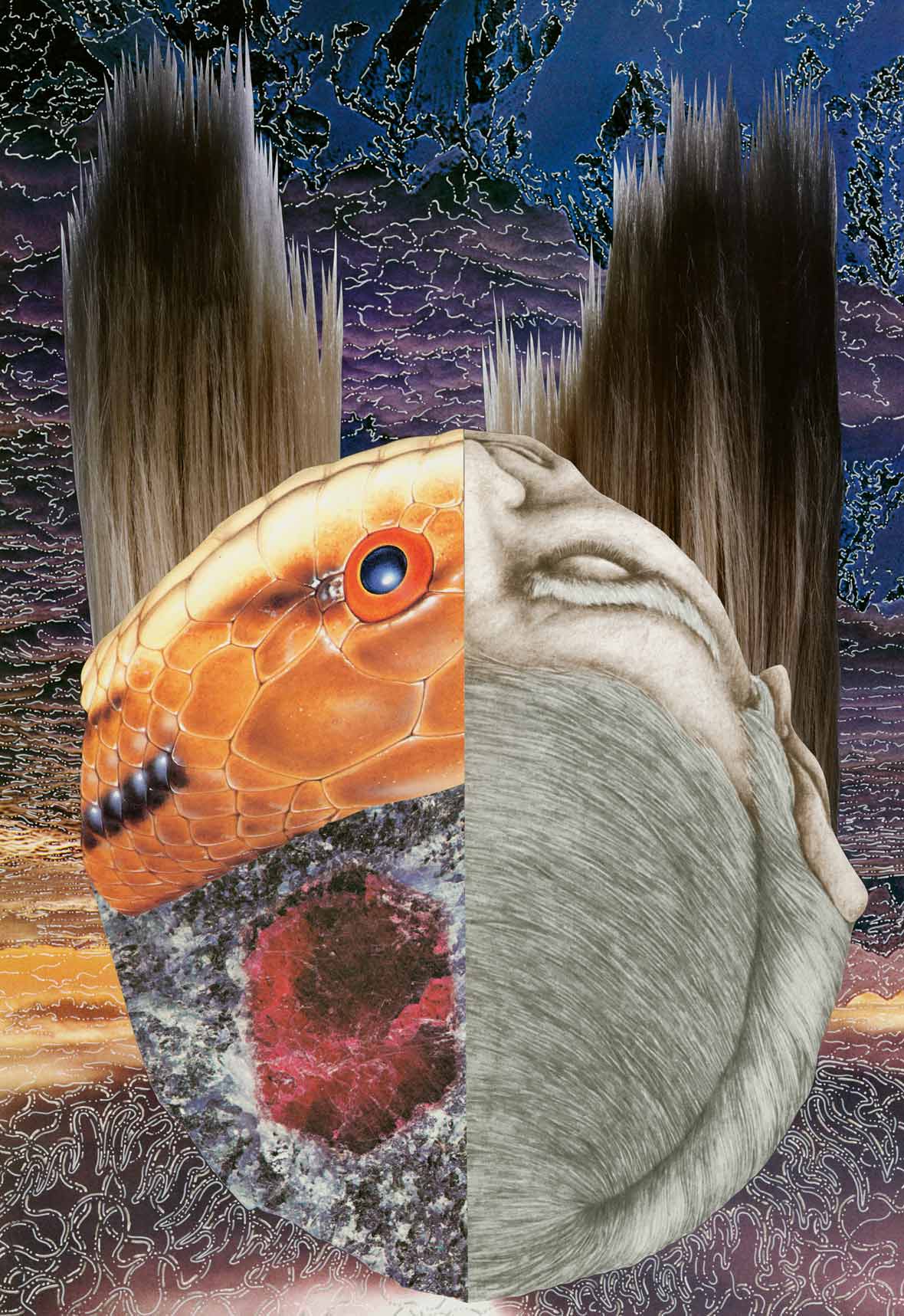
Website: ~/hisham-akira-bharoocha
Instagram: @softcircle
Soundcloud: ~/soft-circle
Twitter: ~/HishamBharoocha
Contributor: Leon Yan
ウェブサイト: ~/hisham-akira-bharoocha
Instagram: @softcircle
Soundcloud: ~/soft-circle
Twitter: ~/HishamBharoocha
寄稿者: Leon Yan

